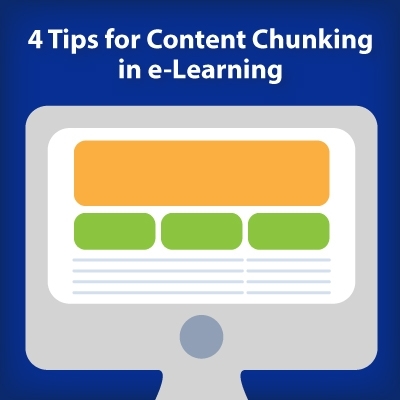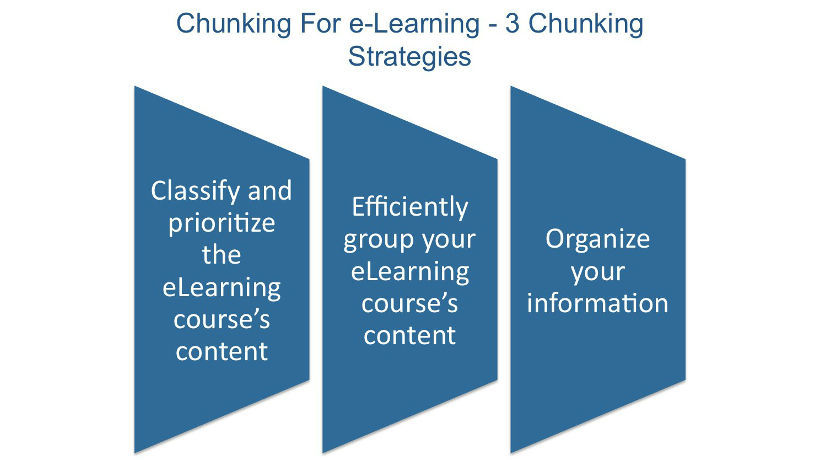Why Content Chunking Is The Basis To An Engaging And Well-Designed Course
Ask me about chunking, and I will let you know that I’m very familiar with it; every Sunday I cook a large pot of stew and chunk it down into small, meal-sized portions that are carefully stashed away in tiny boxes in the refrigerator. During the following week, I take down a box a day for lunch – thaw, heat, eat, and repeat. Small, quick, nutritious, and easy to digest. That is the essence of chunking – grouping into larger/smaller units that make sense on their own (in my case, grouping my meals in little boxes, with each box containing a whole, nutritious meal). Content chunking is quite similar – it is the process of breaking down content into smaller, bite-sized bits of easily digestible information that are easy to comprehend, learn, and commit to memory.
On the contrary, content that is not chunked is hard to understand, assimilate, or retain. It boggles the mind, overwhelms the learner, and leads to cognitive overload.
Here is a typical example of content that has not been chunked:
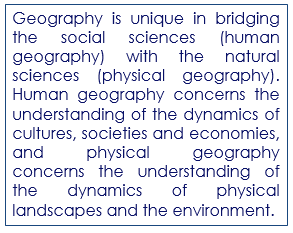
And here is the same content, after it has been chunked:
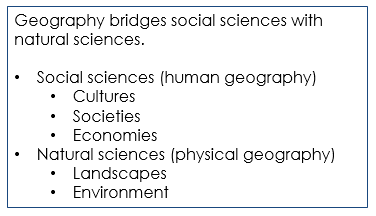
Notice the difference? Which version, do you think, is easier to read and comprehend?
In eLearning, content chunking is a very important step in the process of developing a course. In fact, the success of a course depends to a large extent on how well the content has been chunked. Why? Because as the definition suggests, content must be chunked in a manner that allows learners to easily comprehend (understand) what they are seeing, hearing, or reading. Good comprehension leads to the formation of mind maps that quicken the learning process; this information is automatically committed to memory and can be quickly recalled.
- Content chunking segregates the "need-to-know information" from the "nice-to-know information".
Learners are presented with what they must know onscreen. The nice-to-know, optional information may be provided as a hyperlink that may or may not be accessed by the learner. As a result, the focus is turned to the key points of the course. - Content chunking takes into consideration the screen size of the learner’s learning device.
Heavy text is not recommended for mobile devices. It is also not recommended to force learners to scroll down to read content. This is automatically taken care of when content is chunked efficiently. - Content is presented in an orderly manner, with a logical flow.
This makes it easy for learners to comprehend the course, i.e. to retrieve information as well.
Levels Of Content Chunking
Courses are chunked at 2 levels: Course-level and screen-level chunking.
1. Course-Level Chunking.
Chunking at the course level determines the hierarchy of the course. It is decided how to chunk content into:
- Modules.
- Lessons/units.
- Screens/topics.
Content is continued to be broken down further, until it cannot be broken down anymore (at which stage, we call that bit of chunked content a learning point).
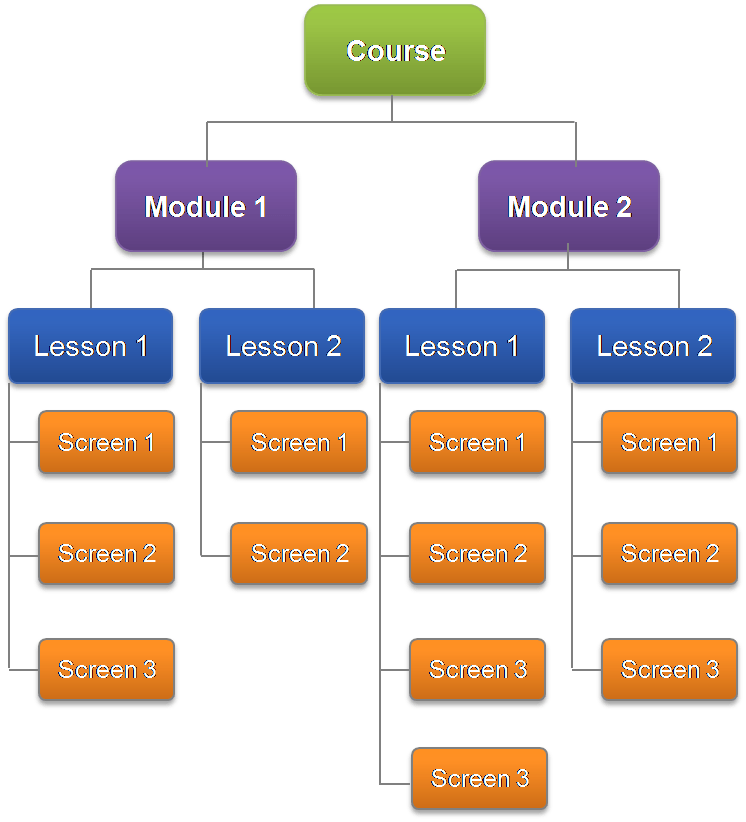
2. Screen-Level Chunking.
As the name suggests, chunking is conducted at the screen level – for each screen. Each screen describes one learning point that cannot be broken down any further (If the learning point is very small, then a couple of such small learning points can be grouped into one screen.). Some ways content can be chunked at the screen level include:
- Subheadings.
- Bulleted lists.
- Tables.
- Short sentences that depict an idea or two.
- Short paragraphs.
- One-sentence paragraphs.
- Bold fonts to mark key phrases.
- Images.
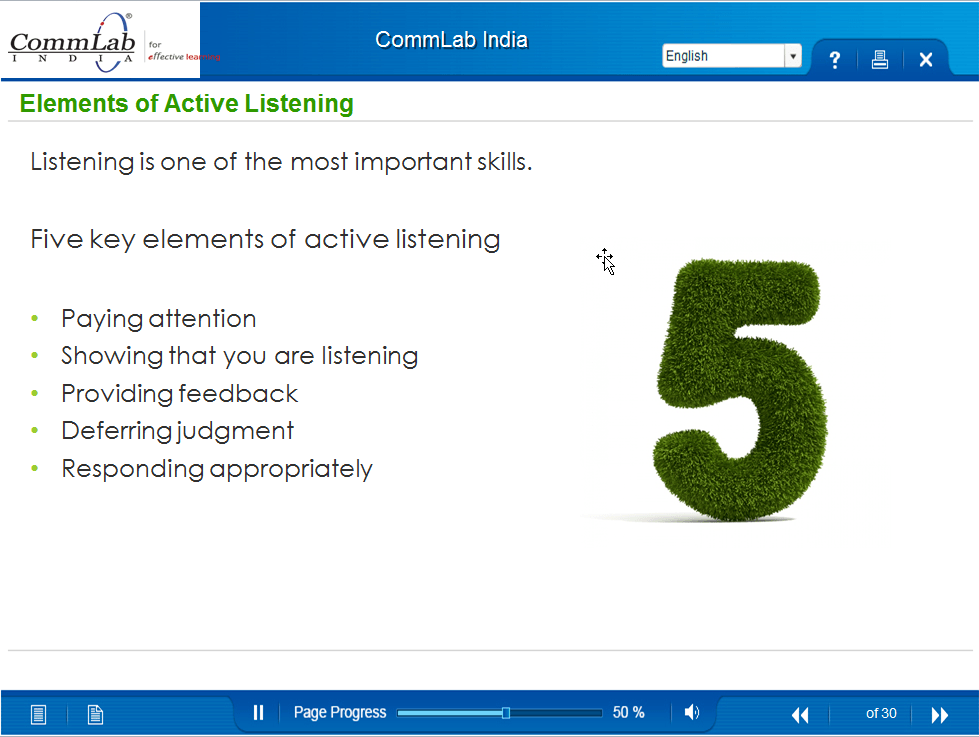
When To Chunk Your eLearning Content
As important as it is to chunk content, there are times when content need not be chunked. Chunking must be done after considering the audio and visual strategies being used, as well as the type of content used. Here are a few examples of when content must be and mustn’t be chunked.
1. Chunk Content When:
- The course is dominated by audio.
This will require a lot of content chunking. The audio takes center stage and can be accompanied with standalone sentences onscreen. - Explaining a detailed procedure or process.
Content can be chunked and shown with interactivities. Audio can be used to explain the procedure or process, in detail. - The course is dominated by or has a lot of visuals.
In this case, content must be chunked a great deal, so as to allow the visuals speak for themselves.
2. Content Chunking Can Be Kept To A Minimum When:
- The content is not dominated by audio.
Detailed, written content would be required. - You must explain facts and principles.
These would require detailed, textual content that does not change the meaning of what must be conveyed. - The course is dominated by text and has little or no visuals and audio.
The content must not be chunked; rather, it must be shown completely, onscreen.
For more information on how to create a successful eLearning course, download the free eBook titled, Instructional Design 101: A Handy Guide for eLearning Designers.



